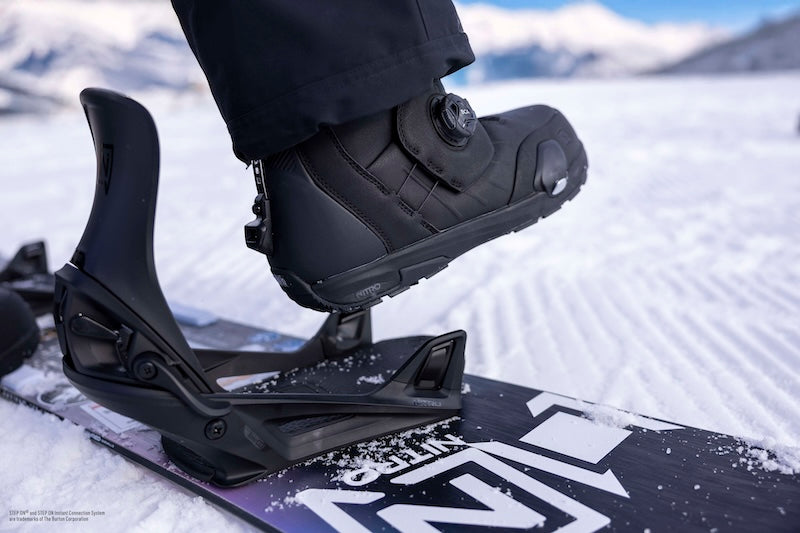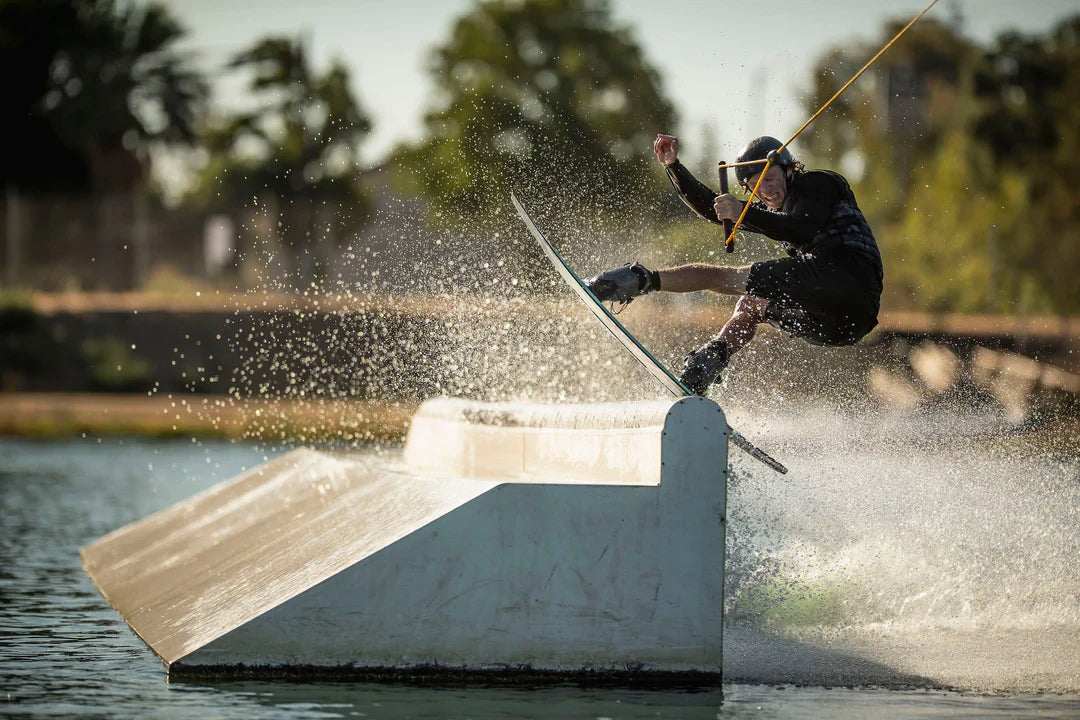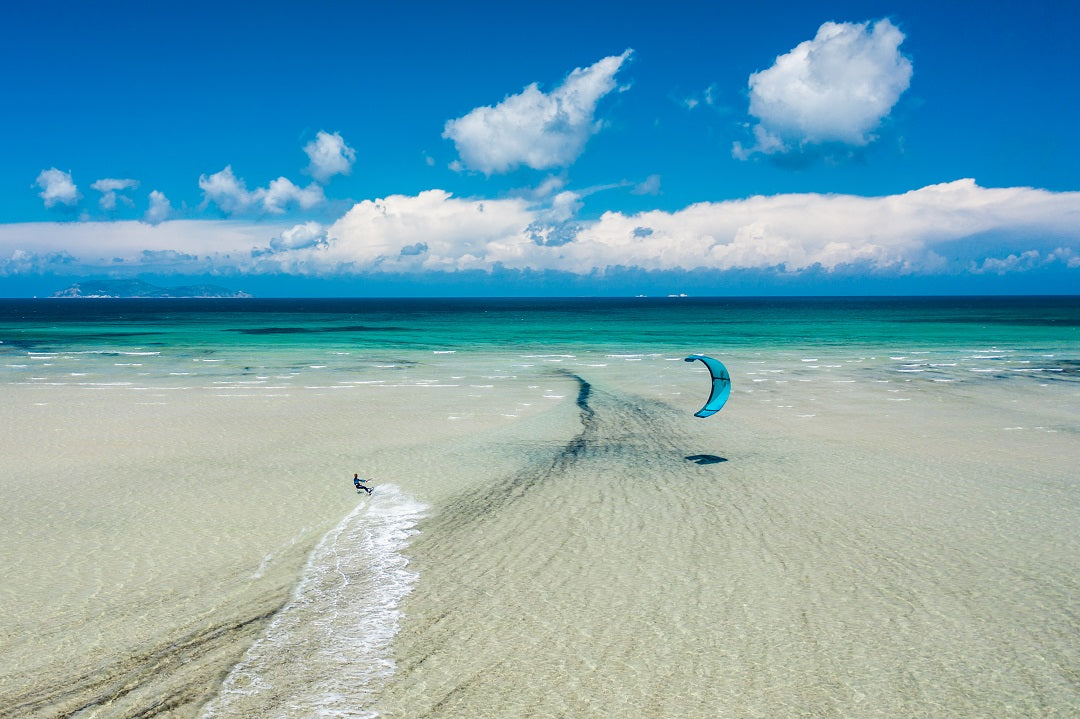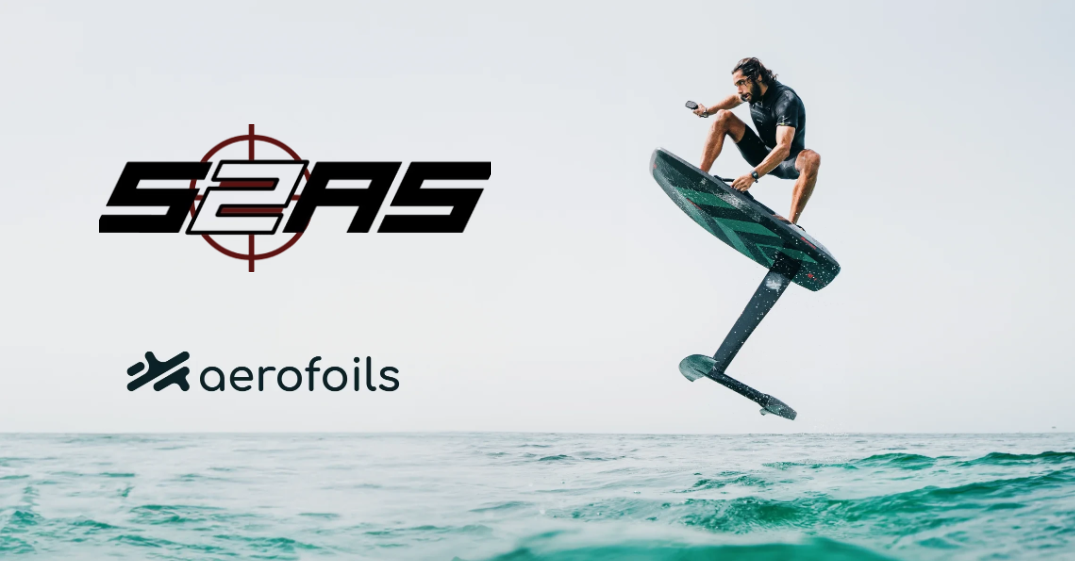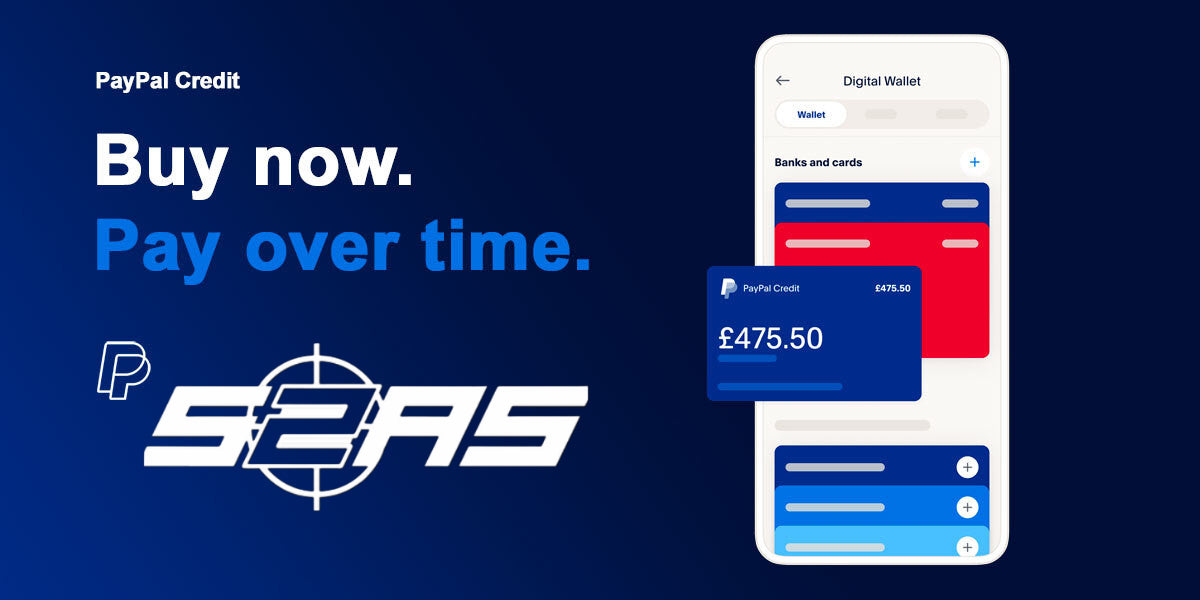La guida definitiva per imparare il Cable Wakeboarding: i 10 migliori consigli per il successo
Il wakeboard via cavo è uno sport acquatico esaltante che ha guadagnato enorme popolarità negli ultimi anni e S2AS è all'avanguardia in questo sport e il più grande fornitore di attrezzature in Europa. A differenza del wakeboard tradizionale dietro una barca, il wakeboard via cavo si svolge in un ambiente controllato, in genere un lago artificiale con un sistema di cavi che trascina i rider lungo un percorso. Questo sport è perfetto per coloro che hanno altre abilità negli sport da tavola come lo snowboard o il kitesurf e cercano di padroneggiare una nuova sfida, che tu sia un principiante assoluto o che stia passando dal wakeboard in barca, allo snowboard o al kitesurf.
In questo blog approfondiremo gli aspetti essenziali del cable wakeboard e ti offriremo i 10 migliori consigli dei nostri esperti per aiutarti a progredire rapidamente e in sicurezza nel tuo percorso di wakeboard.
Capire il Cable Wakeboarding

Il wakeboard via cavo differisce dal wakeboard tradizionale per diversi aspetti chiave. La differenza più notevole è che invece di essere trainati da una barca, si viene tirati da un sistema di cavi sopraelevati. Questi cavi sono sospesi sopra l'acqua, collegati a torri che costeggiano il perimetro del lago. Il cavo ti tira intorno al lago a una velocità costante, che è controllata da un operatore.
Questa velocità costante è uno dei principali vantaggi dei cable park, che consente ai principianti di concentrarsi sulla loro tecnica senza preoccuparsi delle fluttuazioni della velocità delle imbarcazioni. Inoltre, i cable park spesso includono vari ostacoli come rampe, kicker e rail, che aggiungono un ulteriore livello di eccitazione e sfida per i rider più avanzati.
Tuttavia, come per qualsiasi sport, la curva di apprendimento può essere ripida. Con la giusta mentalità, una guida e qualche dritta da insider, puoi padroneggiare le basi e iniziare a divertirti in pochissimo tempo.
I 10 migliori consigli per imparare il Cable Wakeboard
1. Inizia dalle basi: familiarizza con l'attrezzatura

Prima di tuffarsi in acqua, è fondamentale prendere confidenza con l'attrezzatura da wakeboard. L'attrezzatura di base comprende una tavola da wakeboard, attacchi, un casco e un giubbotto di salvataggio. Le tavole da wakeboard sono disponibili in varie dimensioni e stili, ma per i principianti, una tavola più grande con una superficie maggiore offre maggiore stabilità ed equilibrio.
Gli attacchi devono essere aderenti ma non troppo stretti. Sono il collegamento tra te e la tavola, quindi assicurati che siano fissati correttamente e che forniscano un supporto adeguato. Alcuni negozi come il nostro offrono attacchi completamente personalizzati che vengono modellati a caldo sulla forma dei tuoi piedi. I caschi non sono negoziabili; proteggono la testa da potenziali impatti, in particolare quando si tentano acrobazie o si superano ostacoli. Alcuni dei marchi da tenere d'occhio qui sono Mystic e Bern. Infine, un giubbotto di salvataggio è essenziale per la sicurezza e il comfort in acqua.
Prenditi del tempo per familiarizzare con il funzionamento del sistema di cavi. Osserva gli altri rider e fai attenzione ai tempi e al ritmo delle loro partenze. Molti cable park offrono sessioni per principianti o periodi a bassa velocità, ideali per abituarsi alla sensazione della trazione e alla velocità del cavo.
2. Impara a padroneggiare la partenza: è tutta una questione di tempismo

Uno degli aspetti più difficili per i principianti è padroneggiare la partenza. La trazione iniziale dal cavo può essere potente ed è facile perdere l'equilibrio se non si è preparati. La chiave è restare rilassati, piegare le ginocchia e mantenere il peso centrato sulla tavola.
Mentre il cavo tira, lascia che faccia il lavoro. Resisti alla tentazione di alzarti troppo in fretta: lascia che la tensione nel cavo ti sollevi gradualmente fuori dall'acqua. Inizia in posizione accovacciata con le braccia dritte e le ginocchia piegate, quindi estendi lentamente le gambe mentre guadagni slancio. Questa tecnica ti aiuterà a mantenere l'equilibrio e a prevenire le cadute.
3. Concentrati sulla tua posizione: l'equilibrio è la chiave

La tua posizione sulla tavola gioca un ruolo fondamentale nella tua stabilità e nel tuo controllo generale. Per il cable wakeboarding, una posizione atletica è l'ideale. Ciò significa tenere le ginocchia leggermente piegate, la schiena dritta e il peso distribuito uniformemente tra il piede anteriore e quello posteriore.
Assicurati che i fianchi siano rivolti in avanti, con le spalle allineate con la direzione di marcia. Le braccia devono essere estese e rilassate, tenendo la maniglia con entrambe le mani. Evita di piegarti troppo indietro o in avanti: mantenere una posizione centrata sulla tavola ti darà il massimo controllo e reattività.
4. Non affrettare il processo di apprendimento: procedi passo dopo passo
Il cable wakeboarding è uno sport tecnico che richiede tempo e pazienza per essere padroneggiato. È importante non affrettare i progressi. Inizia concentrandoti sulle basi: sentirti a tuo agio sulla tavola, mantenere l'equilibrio e padroneggiare la partenza.
Una volta acquisita sicurezza in queste aree, puoi gradualmente introdurre elementi più avanzati come curve, carving e semplici trick. Cercare di progredire troppo rapidamente può portare a frustrazione e cadute inutili. Fai un passo alla volta e celebra le piccole vittorie lungo il percorso.
5. Impara a tenere i bordi correttamente: le basi del wakeboard

L'edging si riferisce alla tecnica di utilizzo dei bordi del wakeboard per controllare direzione e velocità. Un corretto edging è essenziale per eseguire curve, superare ostacoli e mantenere il controllo sull'acqua.
Per effettuare correttamente i bordi, inclina leggermente la tavola esercitando pressione sulle dita dei piedi o sui talloni, a seconda della direzione in cui vuoi andare. Un bordo dal lato delle dita dei piedi ti girerà verso la parte anteriore, mentre un bordo dal lato dei talloni ti girerà lontano dalla parte posteriore. Esercitati a fare bordi lisci e controllati, aumentando gradualmente l'intensità man mano che ti senti più a tuo agio. Padroneggiare questa tecnica ti aprirà un mondo di possibilità nella tua guida.
6. Tieni gli occhi rivolti verso l'alto: guarda dove vuoi andare
Potrebbe sembrare semplice, ma dove guardi è fondamentale nel wakeboard. Il tuo corpo segue naturalmente la tua linea di vista, quindi tieni gli occhi concentrati su dove vuoi andare, non su dove non vuoi.
Se fissi i tuoi piedi o l'acqua di fronte a te, è più probabile che tu perda l'equilibrio e cada. Invece, tieni la testa alta e guarda avanti. Questo ti aiuterà a mantenere uno slancio in avanti e a rendere più fluide le transizioni tra le curve.
7. Usa il tuo core: coinvolgi i tuoi muscoli per un migliore controllo
Il cable wakeboarding richiede una notevole forza del core. I muscoli del core stabilizzano il corpo e aiutano a mantenere l'equilibrio sulla tavola. Per migliorare il controllo, coinvolgi il core durante la corsa. Questo non significa irrigidirsi, ma piuttosto mantenere il core attivato per supportare i movimenti.
Muscoli del core forti ti aiuteranno anche ad assorbire l'impatto di salti e trick in atterraggio, riducendo lo sforzo su schiena e gambe. Incorpora esercizi di rafforzamento del core nella tua routine di allenamento fuori dall'acqua per sviluppare la necessaria resistenza muscolare.
8. Impara a cadere: fa parte del processo

Cadere è una parte inevitabile dell'apprendimento del wakeboard, soprattutto quando si superano i propri limiti e si provano cose nuove. La chiave è imparare a cadere in sicurezza per ridurre al minimo il rischio di lesioni.
Quando senti che stai perdendo l'equilibrio, cerca di rilassare il corpo ed evita di opporre resistenza alla caduta. Irrigidirsi può portare ad atterraggi goffi e aumentare le probabilità di farsi male. Invece, lasciati cadere naturalmente e ricordati di proteggere la testa piegando il mento verso il petto.
Dopo una caduta, prenditi un momento per riorganizzarti prima di tentare di ricominciare. Rifletti su cosa è andato storto e su come puoi migliorare nel tuo prossimo tentativo.
9. Prendi confidenza con gli ostacoli: procedi gradualmente

Uno degli aspetti più entusiasmanti del cable wakeboarding è l'opportunità di affrontare ostacoli come kicker, slider e rail. Tuttavia, queste caratteristiche possono essere intimidatorie per i principianti. La chiave per padroneggiare gli ostacoli è affrontarli gradualmente.
Inizia con gli ostacoli più piccoli e fai pratica superandoli a velocità lenta e controllata. Man mano che acquisisci sicurezza, puoi provare ostacoli più grandi e incorporare manovre più avanzate come ollie e grab. Indossa sempre protezioni e non aver paura di chiedere consiglio ai rider più esperti.
Ricorda, è meglio procedere lentamente e in sicurezza piuttosto che rischiare di farsi male tentando di superare ostacoli per i quali non si è pronti.
10. Sii persistente e divertiti: goditi il viaggio

Imparare a fare cable wakeboard può essere impegnativo, ma è anche incredibilmente gratificante. Come per qualsiasi sport, più ti alleni, più diventerai bravo. Sii persistente, anche quando incontri battute d'arresto o stalli nei tuoi progressi.
Ma soprattutto, ricordatevi di divertirvi! Il wakeboard consiste nel godersi il brivido della corsa, spingersi oltre i propri limiti e provare l'ebbrezza di scivolare sull'acqua. Festeggiate i vostri successi, imparate dai vostri errori e mantenete un atteggiamento positivo. Con tempo e dedizione, rimarrete stupiti da quanto lontano potete arrivare. Scoprite il viaggio del campione del mondo Liam Peacocks
Considerazioni finali

Il cable wakeboarding è uno sport che offre un mix perfetto di eccitazione, sfida e progressione. Che tu sia un principiante assoluto o un wakeboarder esperto che cerca di provare qualcosa di nuovo, i cable park offrono un ambiente fantastico per affinare le tue abilità e divertirti sull'acqua.
Seguendo questi 10 consigli principali, ti preparerai al successo mentre intraprendi il tuo viaggio nel wakeboard. Ricorda, tutti iniziano come principianti e con la giusta mentalità, pazienza e perseveranza, taglierai l'acqua come un professionista in pochissimo tempo. Quindi equipaggiati, tuffati nell'acqua e goditi il viaggio!
preparati con S2AS Wakeboard Shop
Vuoi ancora più informazioni? Dai un'occhiata a " Come completare un giro completo del cavo "


